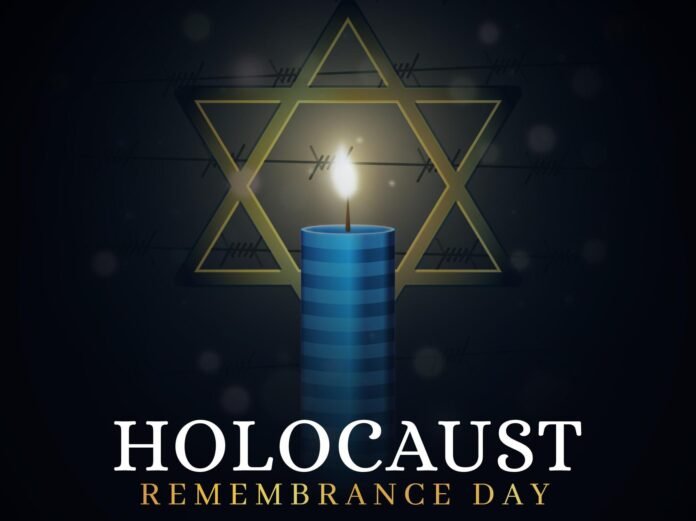Israel observes Holocaust Remembrance Day with a siren, memorials, and the March of the Living
Millions of Israelis stood in solemn silence as a two-minute siren blared across the country on Thursday, marking Holocaust Remembrance Day and commemorating the six million Jews who perished in the Holocaust. This year’s observances were particularly poignant, with a focus on the children who were murdered by the Nazis, as well as the survivors who have lived to share their painful histories.
The siren sounded at 10:00 AM, halting traffic and bringing daily life to a standstill. In response, Israelis stepped out of their cars and stood at attention, honouring the memory of the victims. Moments later, a wreath-laying ceremony was held at Yad Vashem, Israel’s official Holocaust remembrance centre, in Jerusalem. The ceremony was part of a broader series of memorial events, underscoring the importance of remembering the past as a means of ensuring that such atrocities are never repeated.
At Yad Vashem, the sacred site that houses the Holocaust museum and a memorial to those who perished, Knesset Speaker Amir Ohana led the lighting of memorial candles in the synagogue located at the museum. Speaking at the ceremony, Ohana called for the memory of the more than one million Jewish children who were killed in the Holocaust to be honoured. He shared the story of Lea Deutsch, a Croatian child star whose promising career was abruptly halted when Nazi forces took over Croatia. Known as the “Croatian Shirley Temple,” Deutsch’s childhood dreams were stolen, and she was ultimately sent to Auschwitz at the age of 16, where she perished.
The ceremony at Yad Vashem was part of a larger national commemoration known as “Every Person Has a Name,” a tradition that has been held for 36 years. This ceremony involves a public reading of the names of Holocaust victims, reminding Israelis of the individual lives lost in the genocide. Holocaust survivors also participate by lighting candles in memory of those they lost, a deeply personal and emotional ritual.
This year’s ceremony was held under the theme “From the Depths: The Pain of Liberation and Growth,” marking the 80th anniversary of the defeat of Nazi Germany. It focused not only on the loss but also on the pain of liberation and the challenges faced by survivors after the war. Survivors have often spoken of the trauma and loss they endured, not only during the Holocaust but in the years that followed as they rebuilt their lives.
One of the key events during the day was the March of the Living, which took place in Auschwitz, Poland, to mark the 80th anniversary of the liberation of the Nazi death camps and the end of World War II. Holocaust survivors, their families, and members of the Israeli public took part in this poignant march. This year, the event also featured participants who had survived captivity by Hamas, as well as families who had lost loved ones to the ongoing war in Israel. The March of the Living remains a powerful expression of resilience and remembrance, drawing attention to the continued need to confront hate and intolerance.
The day also included a special ceremony at the Mahane Yehuda market in Jerusalem, where people gathered to stand in solidarity, paying tribute to the victims of the Holocaust. The participation of various groups, including those from border communities deeply affected by current conflicts, was a testament to the enduring legacy of the Holocaust and the importance of commemorating it for future generations.
Holocaust Remembrance Day is a powerful reminder of the atrocities that occurred during World War II and the importance of remembering the victims. As Israel continues to honour its past, the solemn reflections are also a call to action: to ensure that the horrors of the Holocaust are never forgotten and never repeated.
